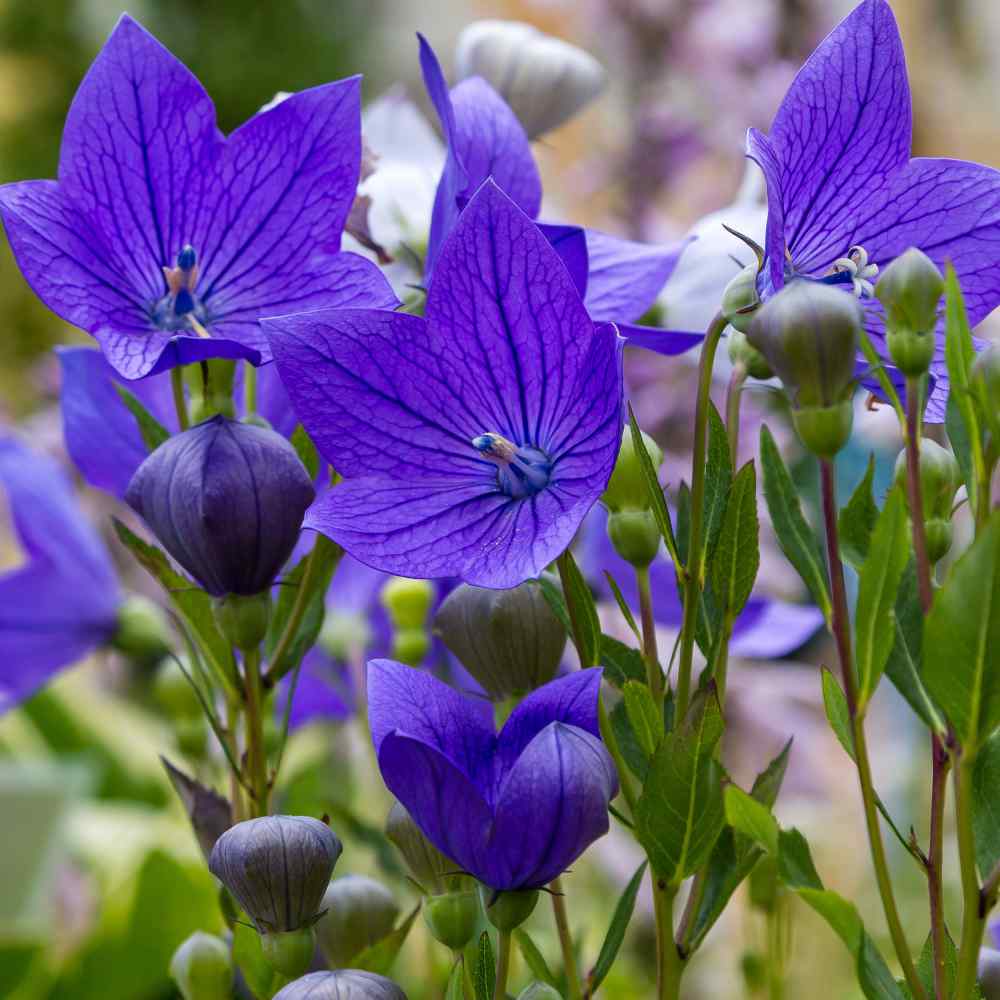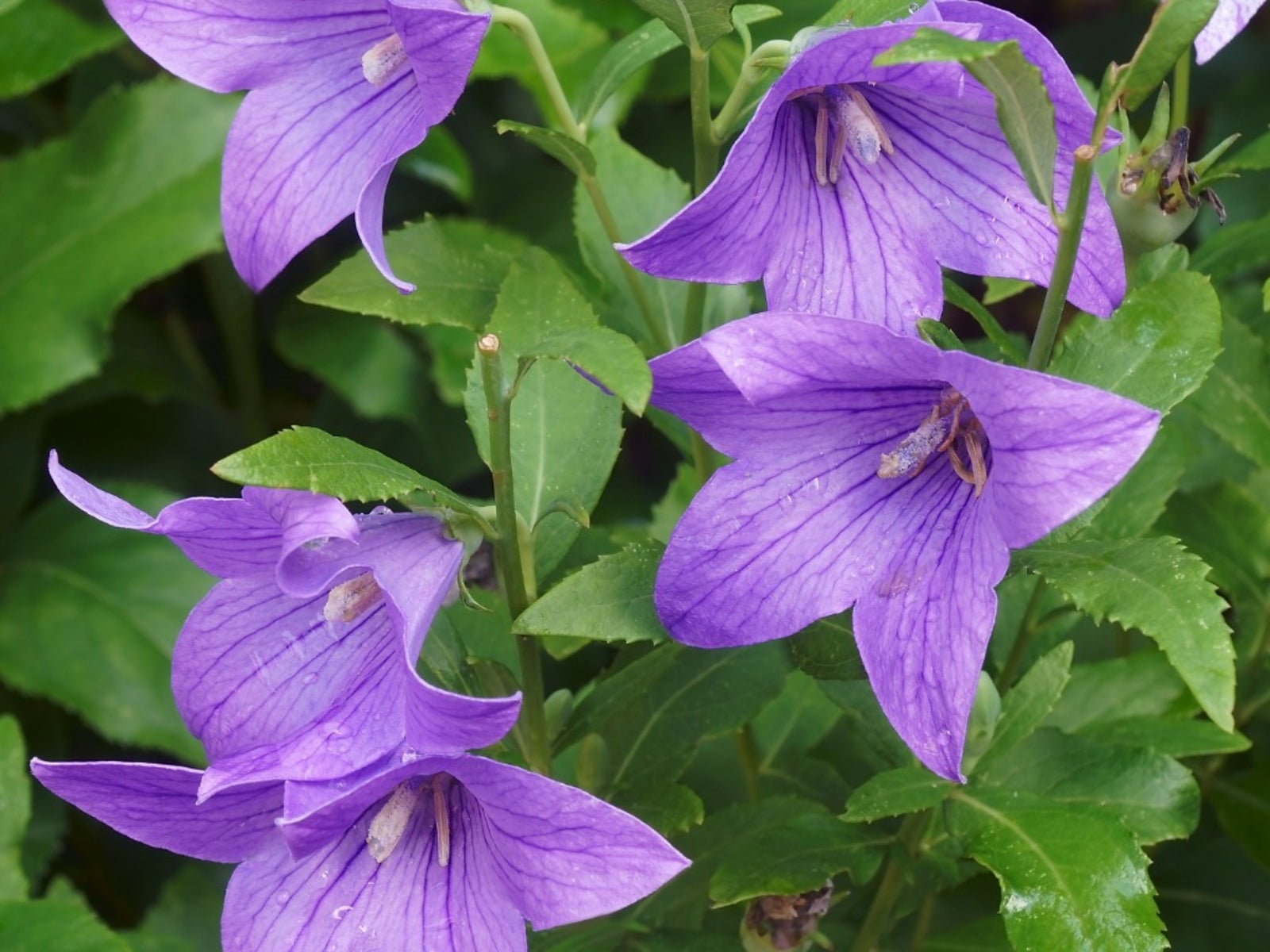1. Botanical Classification:
- Kingdom: Plantae
- Phylum: Angiosperms
- Class: Eudicots
- Order: Asterales
- Family: Campanulaceae
- Genus: Platycodon
- Species: grandiflorus
2. Description:
- Platycodon grandiflorus is a clump-forming perennial with a well-branched, upright growth habit.
- The leaves are lance-shaped, serrated, and dark green in color, with a smooth texture.
- The plant can reach a height of 1 to 2.5 feet (30 to 75 cm) and has a spread of about 1 to 1.5 feet (30 to 45 cm).
3. Flowers:
- The most distinctive feature of Platycodon grandiflorus is its flower buds, which resemble inflated balloons before they open. Hence, the common name "Balloon Flower."
- The flowers are typically blue or purple, although some cultivars produce white, pink, or double-flowered varieties.
- The blooms are star-shaped and can reach a diameter of 2 to 3 inches (5 to 7.5 cm).
- Flowering typically occurs in the summer months.
4. Growing Conditions:
- Platycodon grandiflorus prefers full sun to partial shade, though it can tolerate some shade.
- It thrives in well-drained, moderately fertile soil.
- This plant is relatively hardy and can endure a wide range of temperatures.
5. Propagation:
- You can propagate Platycodon grandiflorus through division or by collecting seeds.
- Division is typically done in the spring or fall.
- Seeds can be collected from the dried seed pods after flowering and sown in the spring.
6. Uses:
- Ornamental: Platycodon grandiflorus is primarily grown for its decorative qualities in gardens and landscapes.
- Medicinal: In traditional Chinese and Korean medicine, certain parts of the plant, including the root, are used for their purported medicinal properties.
7. Maintenance:
- Balloon Flowers are relatively low-maintenance plants. Regular watering and occasional fertilization can help promote healthy growth and flowering.
- Deadheading spent flowers can encourage more blooms.
- The plant may require staking to support its tall stems in windy conditions.
8. Pests and Diseases:
- Platycodon grandiflorus is relatively resistant to pests and diseases. However, it can be susceptible to aphids and snails.
9. Varieties:
- There are several cultivars and varieties of Platycodon grandiflorus with variations in flower color and size. Some popular ones include 'Astra Pink,' 'Fuji Blue,' and 'Sentimental Blue.'
Overall, Platycodon grandiflorus is a beautiful and unique perennial plant known for its balloon-like flower buds and is a popular addition to gardens and landscapes. It's relatively easy to care for and can be a delightful addition to your outdoor space.






super bro
ReplyDelete